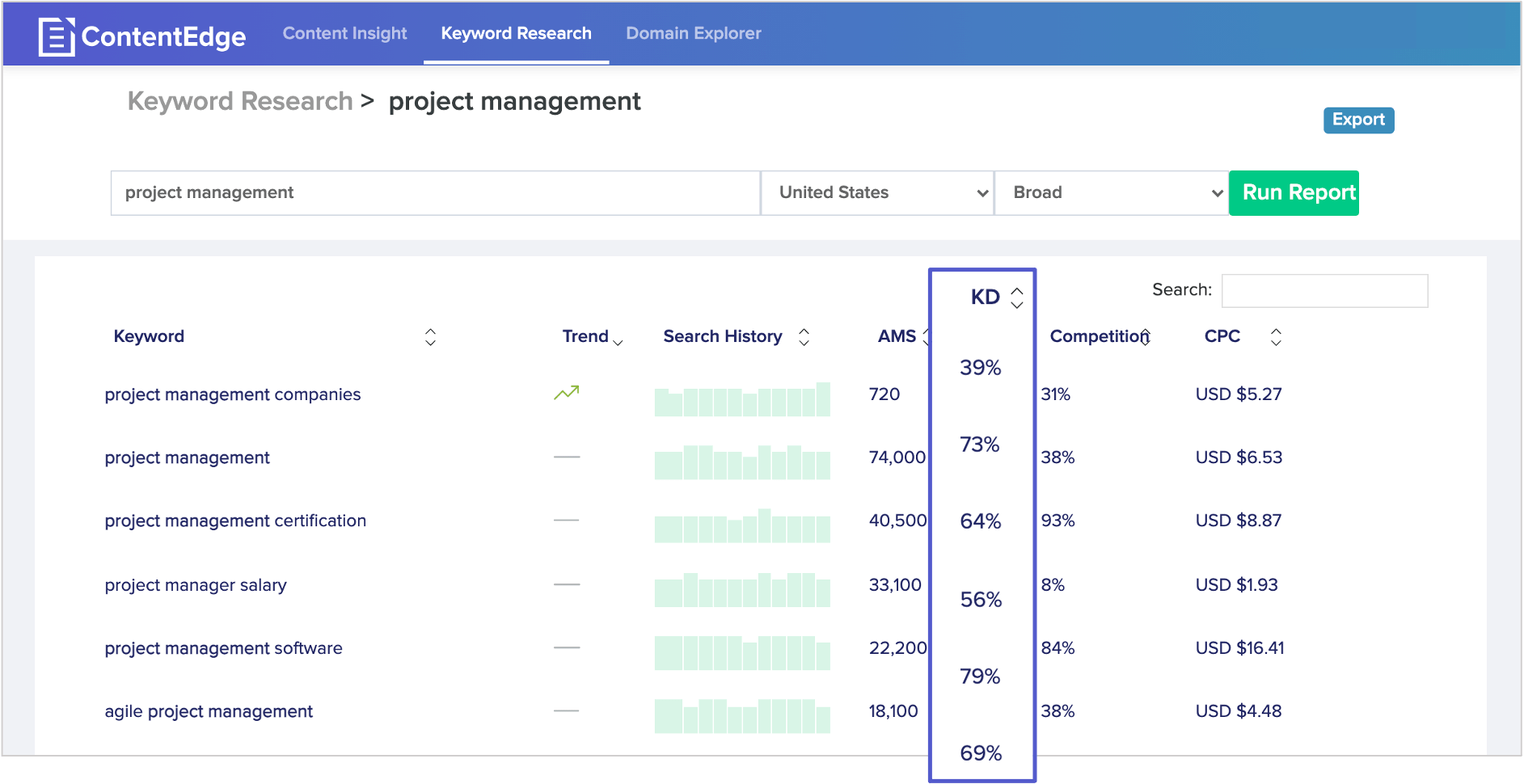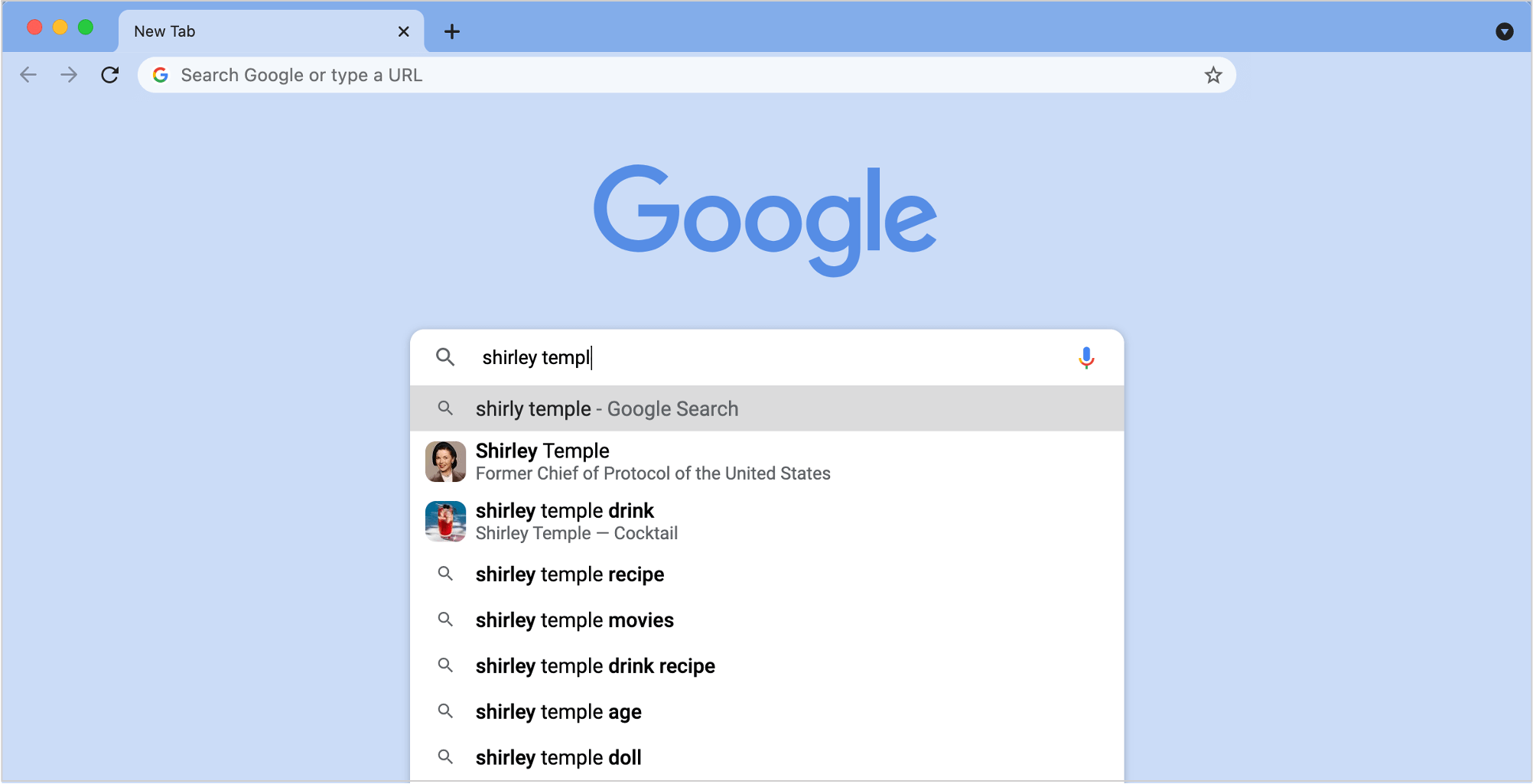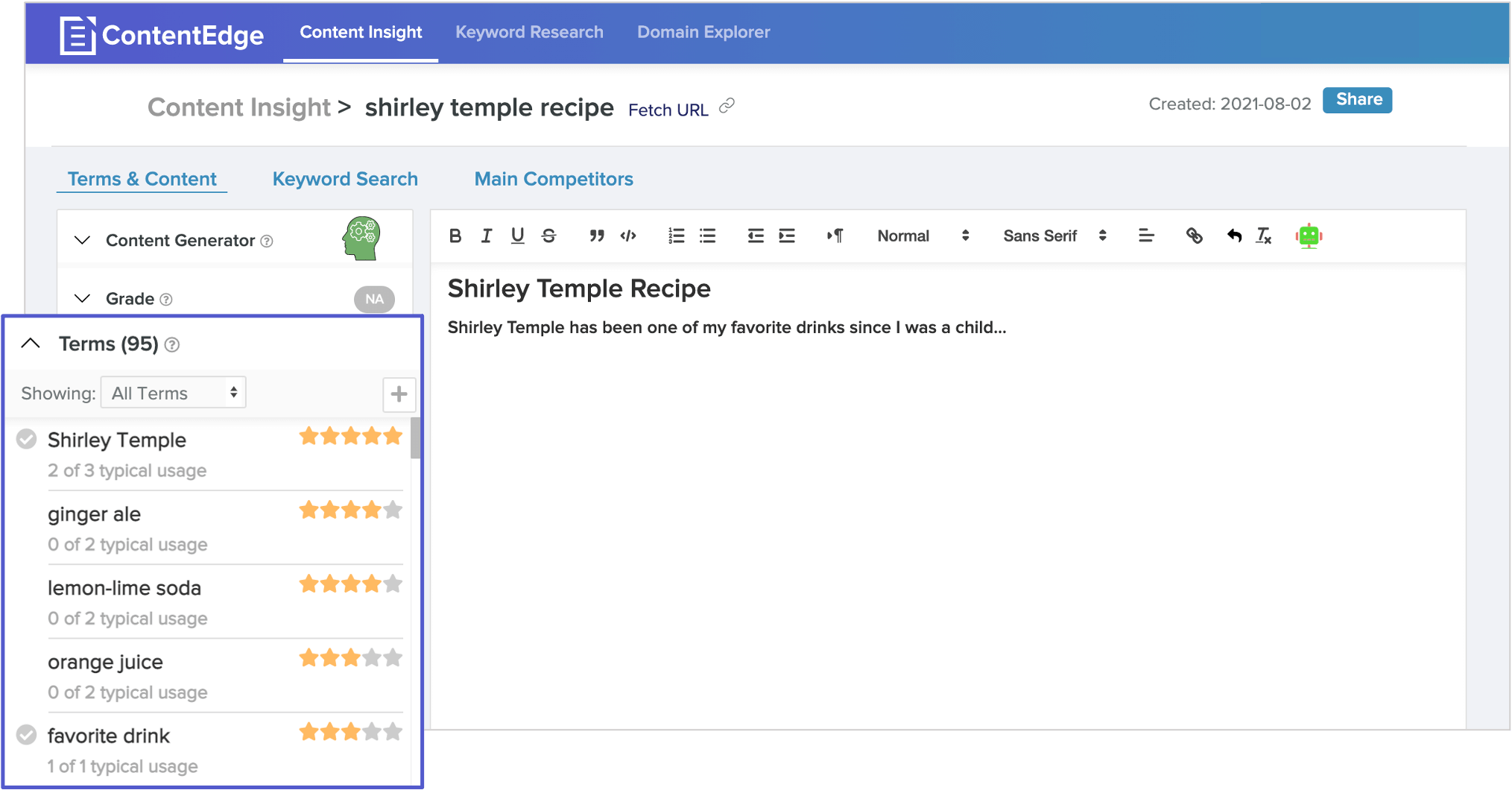By now you probably know that there’s much more to a keyword than its monthly search volume.
There are dozens of other factors to keep in mind, including a keywords’s competitiveness, search intent, and user behaviors. As you look to refine your own strategy, the below tips can help you weed through the billions of keywords out there and choose the right ones to focus on.
Building a keyword strategy now vs. before
In prior years, keywords arguably had even more power than they do today. In fact, before Google rolled out its Florida update in 2003 (which is often called the first major algorithm update that “hit the SEO world with a vengeance”), keyword stuffing was common practice. You could easily manipulate your search engine rankings by filling your page with the same target word over and over again.
Now, of course, things work very differently. Search algorithms have gotten much smarter, and Google uses natural language processing (NLP) to discern the actual meaning and sentiment behind a query. For example, “Shirley Temple” could refer to America’s sweetheart or a popular fizzy drink. If Google sees a query for “Shirley Temple recipe” then it can determine that the user is interested in the drink version.
Beyond this, Google now analyzes content relevance and other factors to decide if you are the right result to show in connection with a keyword. Needless to say, there’s a lot that happens in the background, which makes our jobs as SEO strategists both fun and difficult.
6 non-generic tips for optimizing your keyword strategy
1. Prioritize topics, not just keywords
Ironically, you shouldn’t start building a keyword strategy by thinking about keywords.
A keyword strategy exists to support a larger content marketing strategy, which relies on having a clear understanding of your target audience. If you try to reverse engineer this, then you’ll wind up wasting hours upon hours arbitrarily looking up keywords that you think align with your site (and inevitably miss out on many other strategic terms).
Save yourself the headache by creating a list of questions and concepts that your existing leads and/or customers care about. This will serve as the basis for your topic clusters, or groups of webpages that collectively cover a wide topic.
This topic-based approach will not only earn you brownie points with Google, but will also help you form a clearer, more deliberate way of brainstorming content ideas. After deciding on your main topics, you can then start generating subtopics that naturally indicate long-tail keywords to include in your strategy.
2. Find inspiration by talking with coworkers and customers
SEO is too often treated like a one-man sport, where an SEO practitioner plugs away at his/her computer and surfs through multiple databases to generate a keyword plan. In reality, SEO works best when it’s a collaborative effort.
Talk to your colleagues and clients about what types of information they need to feel confident about a solution like yours. What challenges are your users looking to address? Which stakeholders are involved in a purchase decision? What questions repeatedly come up during sales conversations?
If customers, prospects, and/or team members aren’t immediately available to chat, consider reaching out to brand partners or influencers for their insights. Social media may additionally serve as a great channel to poll potential buyers.
Remember to analyze buyers at both the top and bottom of the awareness funnel; you’ll want to understand what types of content are needed at each stage and for whom.
Bonus tip: You can glean a lot by peeking at a competitors’ blogs to see what key topics they’ve identified as important to post about, as well as which ones get shared the most by readers. Search filters and blog tags can be particularly informative.
3. Focus on low competition words
Low competition words (aka, words that require less domain authority and link building for you to rank on) offer prime real estate, especially if you’re just getting started with content marketing.
Use a platform like ContentEdge, SEMRush, or Moz to check out the competitiveness of a word. Make sure that you’re looking at organic difficulty, not difficulty related to advertising. These scores will typically range from 0% to 100%—the higher the percentage, the more difficult it is to rank. When using ContentEdge, you’ll generally want to look for keywords that are near or below 50% in its keyword difficulty (KD).

While it’s not impossible to rank for words in the upper range of competitiveness, you likely won’t see as immediate results and will have to work harder for your position.
Consider plugging in your target keywords directly into Google as well. See what results come up on the first page. Do they stem from a variety of companies? Or, does a company like Facebook or Amazon basically dominate all the results? If the latter, then you’ll likely want to think of another related term to target because you’re likely not going to outrank these industry giants.
4. Check that keywords align with your offering
You’ll be surprised by how easy it is to get sidetracked as you try to expand your keyword strategy. For instance, say that your company sells a project management tool. You may be writing blogs on topics like, “How to Manage Multiple Client Projects at Once” or “How to Keep a Multi-functional Team on Track.”
You then see an opportunity to rank for the keywords “role of project manager” and “how to become a project manager.” As a result, you start creating content for a very different audience (aspiring project managers, as opposed to existing project managers) and writing about topics that have little relevance to your brand.
Granted, you could try to illustrate how becoming a successful project manager is associated with using your software—but the likelihood of your reader converting into a customer is far lower than if your reader was already familiar with the job and searching for suggestions on how to make his/her life easier.
Double check that all of your keywords are related to your business’ area of expertise. This will help to ensure that you attract more qualified leads.
5. Compare non-branded keywords against branded keywords
These two types of keywords are pretty self-explanatory: branded keywords are ones that include your company name (e.g., “ContentEdge platform”) and non-branded keywords are ones that don’t (e.g., “content optimization platform”).
Branded keywords naturally target a much narrower audience that’s more likely to convert into a sale, whereas non-branded words have a greater reach but aren’t as focused. That said, only 10% of queries are branded, while 80% are informational (the other 10% are transactional).
It’s no wonder that most of us are focused on winning non-branded terms. But bear in mind that you should be ranking at the top of branded keywords. This is crucial for directing warm leads to the right site and establishing your authority as a brand.
Use Google Search Console to check for the branded search terms that currently bring people to your site. These queries can help you identify what leads want to know about your brand before making a purchase.
Do they search for price, your business location, or how your product compares to XYZ competitor? By looking at the data, you can get ideas for which questions to address in your website copy and content.
6. Use variations and LSI keywords
When you’re in the process of actually creating content, include multiple variations of your primary keyword in moderation. Keyword: “in moderation.” Be careful not to add synonyms unnaturally since this can still be dinged as keyword stuffing.
LSI (Latent Semantic Indexing) terms are equally—if not more—important. These are words that Google understands as contextually relevant to your subject area. For example, if you’re writing about Shirley Temple (the drink), then using words like “recipe,” “glass,” “syrup,” and “soda” can reinforce that your page is about the drink.
As keyword density is becoming less important to Google, LSI words are becoming increasingly important. Google autocomplete is a fast way to identify LSI words.

Alternatively, you can use ContentEdge’s Content Insight report for a more precise list of related terms. Simply enter your keyword or phrase. ContentEdge will then generate a report showing how often certain words appear within the top-ranking pages of that SERP.

ContentEdge provides an area where you can draft your copy and will show you how many times you use an LSI keyword compared to its typical usage.
Welcome to the era of advanced keyword research
Building a keyword strategy is certainly not as straightforward as it used to be. The silver lining is that there are plenty of resources you can tap for ideas, and best practices you can apply to keep your strategy aligned with your business goals.
If you need an extra hand with keyword research, try a free trial of ContentEdge. Discover which terms offer the biggest ROI for your time.
